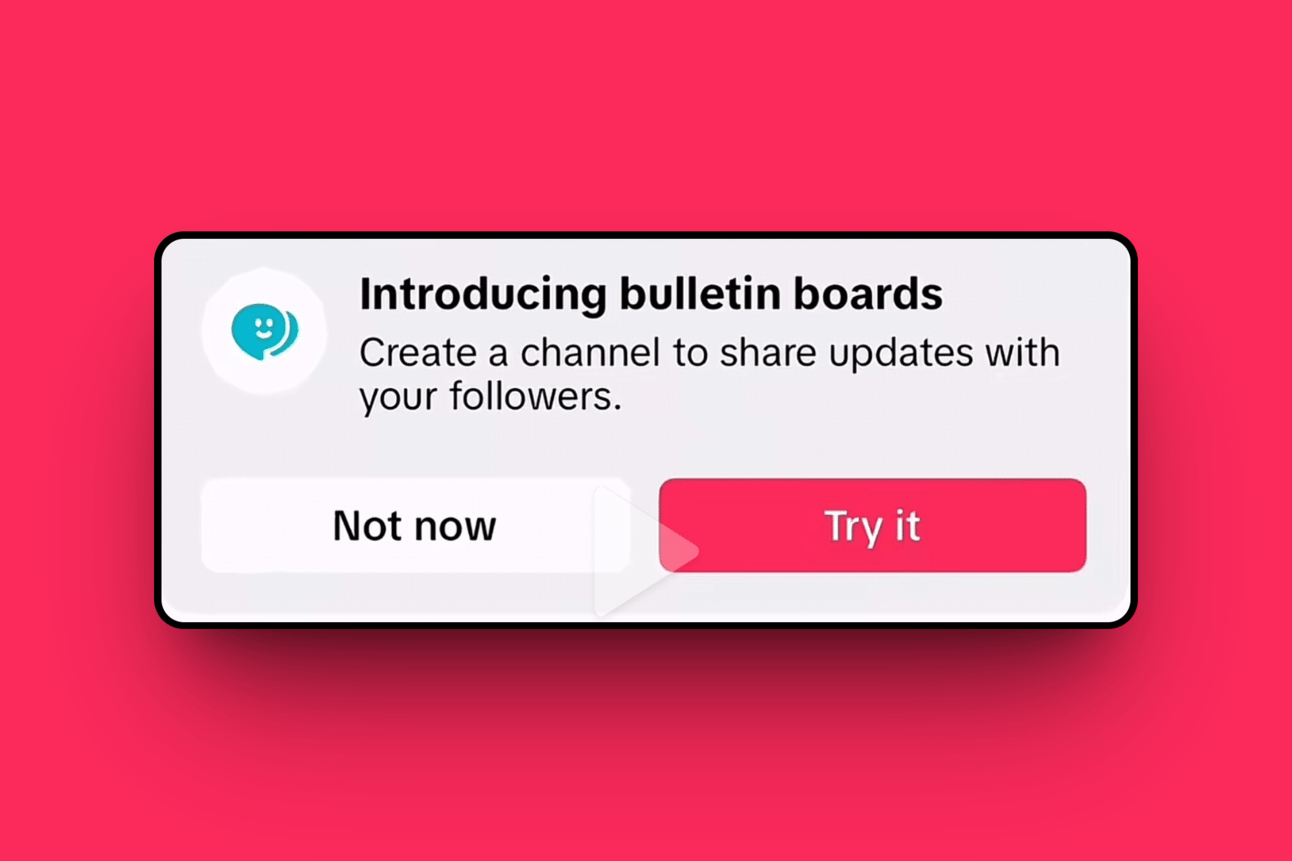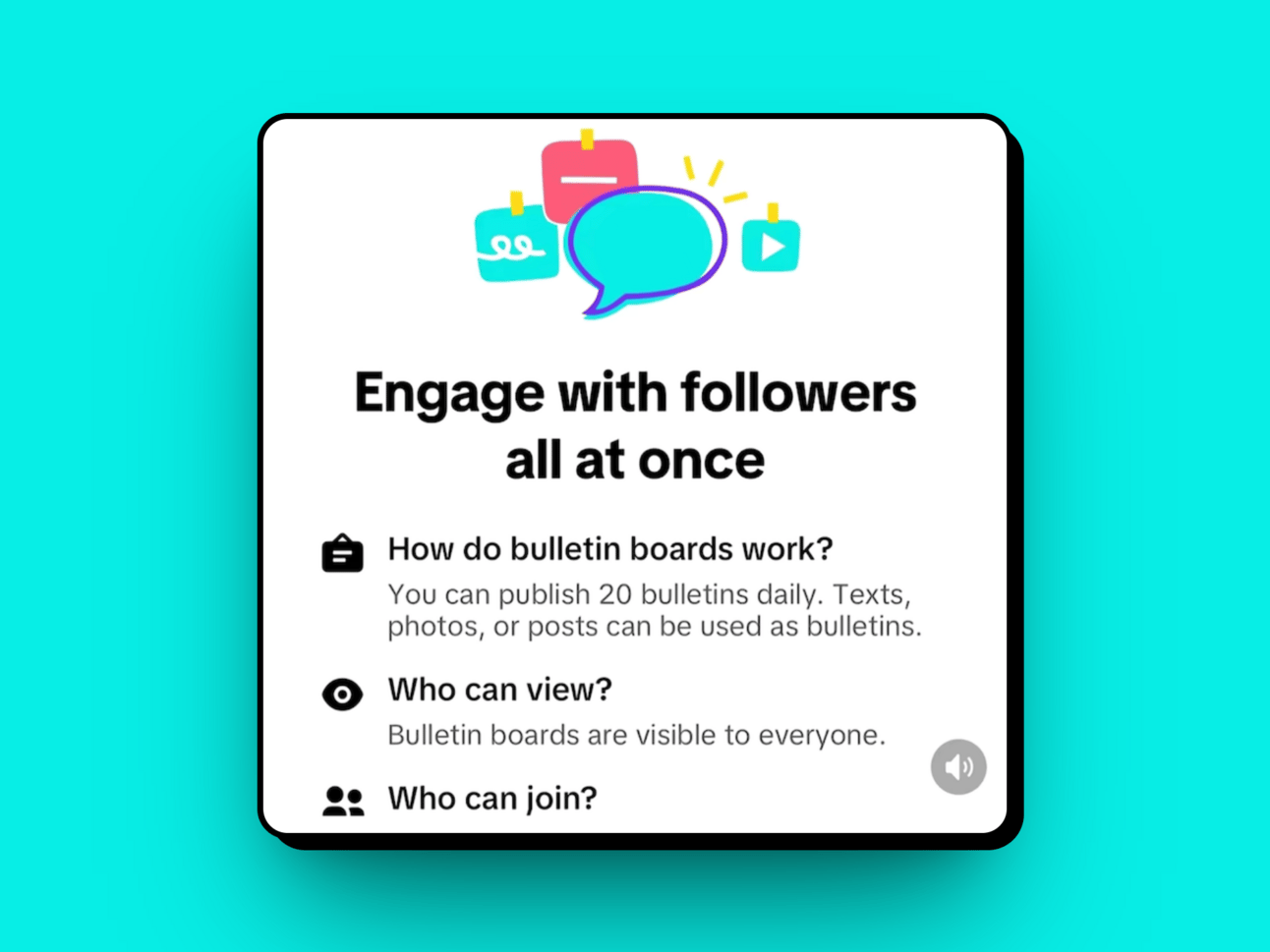
TikTok Bulletin Boards
Next week, I’ll be sending out a breakdown of key themes and trends across the creator economy for the first half of 2025. To get full access to this piece, along with other bonus content like last week’s deep dive into the pros and cons of long-term creator partnerships, consider becoming a paid supporter.
TODAY’S EDITION
TikTok is quietly rolling out its answer to Instagram Broadcast Channels: Bulletin Boards.
YouTube is expanding auto-dubbing to give 80 million creators global access.
Threads is making it easier for users to access their custom feeds on mobile.
TikTok is looking to grow its ecosystem of news creators with a newly dedicated role.
LinkedIn is adding another way for creators to share video content — now as the covers for their newsletters and articles.
Roblox is on track to pay creators $1 billion for the first time.
DEEP DIVE
TikTok Takes On Instagram Broadcast Channels with New One-to-Many Messaging Feature, Bulletin Boards

TikTok Bulletin Boards
Over the past few months (since around April), TikTok has quietly rolled out a new feature called Bulletin Boards to select creators and brands. Similar to Instagram’s Broadcast Channels and YouTube’s Communities, it’s a many-to-many messaging feature.
Here’s how it works, who has access based on some digging, and what it means for creators and brands on TikTok.
How It Works
Creators with access can create a Bulletin Board directly from their inbox by tapping a plus sign. From there, they can name it, write a description, and decide whether to display a “Join” button on their profile.
Inside a Bulletin Board, creators and brands can share text, photos, and videos with a limit of 20 bulletins daily. Followers who join can react with emojis but cannot yet respond with messages or comments.
Who Has Access So Far
Access is currently limited to mostly high-profile accounts in publishing, sports, music, celebrity, and mega-creators. Examples include:
Publishers: People Magazine
Sports: Inter Miami CF, Paris Saint-Germain
Musicians: The Jonas Brothers, Zara Larsson, Lauren Spencer Smith, Alan Walker
Celebrities & Digital Creators: Martha Stewart, James Charles
Some smaller accounts in certain regions also have access, indicating regional testing, too.
Why It Matters
TikTok has long excelled at discovery through the For You Page but lacked robust tools to deepen engagement with those who decide to tap “Follow.” Bulletin Boards address this by offering creators and brands a reliable way to communicate independently of the algorithm.
This enables use cases like:
Announcing new content or series before it goes live to drive early views and engagement.
Sending reminders for livestreams or live events to drive attendance and encourage repeat engagement.
Promoting TikTok Shop listings, especially for time-sensitive drops, discount codes, or bundle deals, to drive sales.
Teasing exclusive or behind-the-scenes moments such as product development, event access, or content creation workflows.
Using polls to gather quick feedback on upcoming content, product features, or creative direction.
Sharing links to off-platform content that might otherwise get lost in Stories.
Social Platforms Doubling Down on Community & Messaging Features
TikTok joins a broader trend of social platforms building in-app community tools and expanding messaging capabilities. While these might resemble platforms like Discord or Circle, they don’t offer the same level of control or community ownership; instead, they function as integrated content formats within the platforms.
These tools provide convenience, letting creators engage audiences where they already are, avoiding the friction and often low conversion rates of sending followers elsewhere.
Why a Multi-Platform Community Strategy Matters
Audiences behave differently across platforms, so creators and brands should use each platform’s native community features, tailoring content and frequency to fit the unique culture and expectations of each audience.
Just as creators adapt short-form videos to fit TikTok, Reels, and Shorts with subtle but deliberate tweaks, community channels should be strategically customized to each platform’s unique audience behavior and cultural norms.
For example, messaging is a big part of Instagram, so users there may be open to more frequent updates, while messaging isn’t as natural on TikTok, so it’s important to test how users respond to different types of updates before flooding a Bulletin Board.
NEWS, TRENDS & INSIGHTS
YouTube
YouTube expanded access to automatic dubbing. 80 million creators will soon be eligible to use the feature. Once enabled, all new content will be automatically dubbed based on each viewer’s language preferences and watch history. YouTube is also adding support for 11 new languages, making more content accessible worldwide and helping creators reach global audiences.
YouTube shared a pair of AI updates. When Premium users search for certain topics, like things to do or products, they may see an AI-powered search results carousel that suggests videos and topic descriptions created by creators. Some non-Premium users will also start to get access to its conversational AI tool that provides more information about a video, recommendations, and more. Just like its parent company, Google, YouTube is increasingly leaning on AI to connect users to relevant content.
YouTube is tightening its live streaming rules starting July 22. The minimum age to go live will be raised to 16. Streams featuring users aged 13 to 15 without an adult present will have chat disabled and may lose access to other live features. YouTube may also remove these streams and suspend live privileges. This builds on other safety measures like blurring thumbnails for mature content in search results.
YouTube is updating Advanced Mode in Analytics. It’s adding a new sidebar that allows creators to customize reports using different content breakdowns, performance metrics, and filters. They can also save frequently used reports. The update is designed to help creators better understand their performance and make more informed, data-driven decisions.
YouTube published new resources for artists. They include best practices for audience growth, how to use Shorts effectively, and tips for navigating Analytics. As TikTok ramps up its platform for artists, YouTube is reinforcing its strong ties to the music industry by expanding support for musicians and helping them succeed on the platform.
Meta
Instagram added new customization options for Notes, allowing users to add background colors and emojis. These updates help make Notes, which are popular with Gen Z, stand out in inboxes and give users more ways to express themselves.
Threads is rolling out a simpler feed design on mobile. Instead of swiping horizontally, users will be able to access all their feeds from a dropdown menu in the top left. Easier navigation may encourage users to explore more of their custom feeds, increasing overall engagement.
Edits, Instagram’s video editing app, received several updates. The highly requested Keyframes feature lets users animate the position, rotation, and scale of clips. The Ideas tab now allows users to save audio, leave sticky notes on audio, and work in a full-screen editor. Creators can also use voice enhancements and choose from more than 30 text effects. With ongoing improvements and some backlash toward CapCut around its Terms of Service, Edits should gain more traction among creators.
WhatsApp introduced Message Summaries in the U.S., powered by Meta AI. This feature provides private summaries of unread messages in a chat, helping users catch up quickly. Some users may have concerns about AI analyzing their messages, which could affect adoption.
TikTok
TikTok is hiring a Creator Manager for News creators. This person will be responsible for growing and supporting news creators in North America, as well as developing scalable partnerships with leading news creators globally. With more than half of American TikTok users getting news on the app and social media surpassing television as a primary news source, this role is both timely and strategic.
TikTok kicked off Community Fest 2025, taking place from June 15 to July 5. This global event will highlight its 130 million LIVE creators and billions of viewers. It leads into LIVE Fest 2025 and highlights TikTok’s focus on live streaming as a key driver of e-commerce and monetization for creators.
Snapchat
Snapchat acquired Saturn, a social calendar app built for high school and college students. Saturan includes block schedules, sortable calendars, and tools for managing extracurricular activities. While it will continue to operate as a standalone app for now, Snapchat is likely to integrate some of its features into its core app to support real-life social connections.
LinkedIn added support for video covers on newsletters and articles. Creators can now upload a video instead of a photo as the cover. When shared in the feed, the newsletter or article will feature a playable video, and the video thumbnail in emails will link directly to the content. This gives creators a new way to make long-form content stand out, such as using a talking-head style video to preview what’s inside the newsletter or article.
VSCO
VSCO is launching Captures, a new standalone iOS camera app that lets users apply over 50 film-style filters before taking a photo. Images can be exported or sent directly to the VSCO app. Captures is currently being tested in Ireland, Australia, and New Zealand, with U.S. access expected later this summer. Since the app requires a VSCO login, it serves as a new entry point for user acquisition and reflects the broader trend of platforms launching standalone apps to drive growth and/or serve new audiences.
Roblox
Roblox introduced Creator Rewards, a bonus program that rewards creators with Robux based on user engagement with their experiences. Starting July 24, creators will be eligible for a Daily Engagement Reward when users spend at least 10 minutes in their experience and an Audience Expansion Reward for attracting new or returning users. Roblox is on pace to pay creators one billion dollars this year for the first time.
WHAT I’M READING
True Religion’s first-ever CMO, Kristen D’Arcy, revealed that the brand is now seeing a 60–80% increase in “add to cart” actions when content from its Team True creator partners appears on the product detail page.
The nonprofit Creative Commons has launched the CC Signals project, a new initiative that allows dataset holders to specify how their content can or cannot be used by machines, including for training AI models.
Like & Subscribe writer Natalie Jarvey obtained a leaked deck from Spotify that shows the company isn’t just targeting video podcasters, it’s making a much bigger play to attract video creators to the platform.
THANK YOU
Support the Newsletter: If you're getting value from the newsletter and want to support, you can do so in a few ways: share it with a colleague, contribute via Buy Me A Coffee, or upgrade to the paid tier.
Stay Connected: For more content and updates, visit my website or follow me on LinkedIn, Threads, and Instagram.
Interested in Working Together? I’m available for a full-time role, consulting, advising, brand partnerships, speaking, and more. Let’s connect here.
